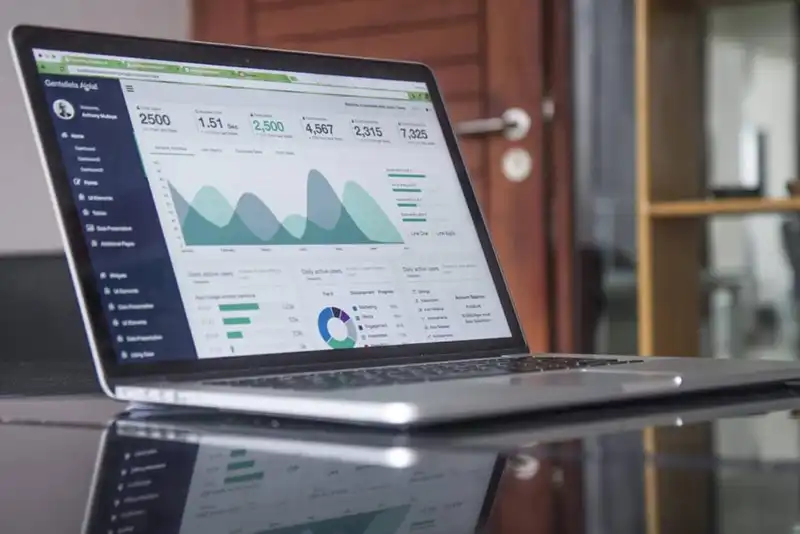Business Models Explained- How to Create a Winning Strategy
Determining how products fulfill customer needs is a challenge for new and seasoned business owners alike. While ensuring that these products fit market needs is only one aspect of running a sustainable business, it does not necessarily guarantee success.
Organizations must have a business model to help ensure products and services are appropriately priced and that the target audience is being reached. This goes a long way in enabling businesses to sustain growth and increase profits.
Defining the right business model for a brand demands the same dedication and effort that goes into creating and designing the products/services. And yet, many businesses don't truly understand how to leverage business models to gain a competitive edge in their industry.
Here's a look into how to create that winning strategy.
What is a Business Model?
A business model defines how a business can offer customers valuable solutions, while simultaneously making a profit.
In Why Business Models Matter, Joan Magretta defines business models as stories that explain how enterprises work.
A successful business model enables executives to structure their product costs and consumer revenue streams, and, ultimately, profits. Companies can choose whether to lower these costs in design or in the manufacturing processes, what actions to take in the marketing and sales methods, or even how to establish new payment processes from customers.
Different Kinds of Business Models

There are a plethora of business models that management can use to refine their business processes and optimize for ultimate value. These include-
Advertising Business Model
The advertising business model involves generating revenue through display advertising content. Content managers create and curate content for their audiences to read or watch while allowing brands and advertisers to target their desired demographic and geographical customer segments.
The business model itself has seen a considerable change as shifts in content consumption have led businesses to move from print media to online digital media.
Managers not only have to engage their audiences with quality content that offers them value, but they also have to ensure advertisers can gain revenue from their placements. Content platforms like YouTube are prime examples of successful advertising business models.
Crowdsourcing Business Model
Herein businesses source content from their audience members, in return for rewards or a percentage of sales generated by the resulting content. The key to success lies in encouraging users to contribute content by enticing them with the right rewards.
Consequently, businesses often leverage the crowdsourcing business model to connect with consumers by encouraging user-generated content.
For example, Lay's Do Us A Flavor crowdsourcing campaign encouraged customers to create new flavors for the chips and post them online. People across the globe voted for their favorite flavors, and the flavor with the most votes got the $1 Million grand prize.
Consequently, Lay's introduces three new flavors to the market, but more importantly, they had confirmed the success of these flavors before they ever got to the production stage. The crowdsourcing business model is often used in conjunction with the advertising model to maximize the outcomes as both models tend to complement each other.
Affiliate Business Model
The affiliate business model takes a spin on the advertising model by embedding affiliate links in content instead of using visual advertising placements.
For example, Amazon.com has an extensive affiliate partner program that allows platforms like WireCutter and Top Ten Reviews to earn a profit from marketing Amazon products to their audiences.
Online art platforms can easily embed affiliate links to art supplies on Amazon within their reviews. This makes it easy for audience members to buy supplies that were reviewed, and Amazon will pay a commission to the platform for every sale they bring in.
Brokerage Business Model
If a business facilitates buyer and seller transactions, then the brokerage business model strategy is the best way to go. Here, managers can charge sellers and/or buyers a commission for connecting them to parties interested in making a transaction.
At the top of the list, real estate platforms like Zillow and Realtor.com are the most common type of brokerage business models. However, platforms like Fiverr also enable customers to connect and contract freelancers on the site. Of course, Fiverr, Upwork, and other such platforms charge buyers a commission for this service.
Marketplace Business Model
A marketplace-based business lets sellers market items for sale, and also enables customers to find and interact with sellers to purchase goods.
This business model sources revenue from fees to either (or both) buyers and sellers, for facilitating the sale. Online marketplaces like OLX, Craigslist, and eBay, enable the buying and selling of a wide range of products and even let sellers advertise their products so both parties are assured of a safe transaction.

Disintermediation Business Model
For businesses that produce and sell through intermediaries, the disintermediation business model allows owners to sidestep intermediaries in the supply chain and sell directly to consumers.
Companies like Casper and Dell are stellar examples of how businesses can lower costs and build closer relationships with their customer base.
Leasing Business Model
A business model based on leasing allows customers to borrow products for some time, at the end of which they need to return the products that were lent to them. This business model is popular with expensive products where customers aren't able to afford a full purchase but can afford to borrow.
These include renting cars for short trips, leasing as a banking product, and even tuxedos and dresses for prom.
Freemium Business Model
A company based on the freemium business model allows its customers to use part of its products and services for free while charging for access to premium features.
By offering unlimited access to basic features and curtailing access to more evolved features, businesses like MailChimp and Hootsuite entice consumers to pay for more advanced functionality.
Pay-As-You-Go Business Model
Pay-as-you-go businesses charge customers for the actual usage of their services, rather than compelling customers to pay before they get the advantage of a product or service.
Commonly used in utility and mobile communication industries, pay-as-you-go also works well in tandem with other business models to offer clients more customizable payment plans.
Razor Blade Business Model
The razor blade model aims to sell durable products at low prices to increase the volume sales of disposable components of said product. This is why Gillette easily gives away products like razor handles to encourage high volume purchases of their blades and other more profitable products for the long term.
Ultimately, brands that use this model want consumers to buy into a system that guarantees ongoing purchases, thus ensuring consumer loyalty.
Reverse Auction Business Model
Companies like Trivago and LendingTree are based on a reverse auction business model that allows buyers (bidders) to view products/services at their lowest prices.
Contractors can also bid on construction projects through the reverse auction model and win business based on their experience and successful projects.
Subscription-Based Business Model
Subscription-based business models are now commonly used by brands that allow customers to use services upon purchasing a subscription.
Newspaper and magazine subscriptions are also on the rise as print media converges online. Still, subscriptions tend to be more popular with streaming services like Netflix and Amazon Prime. Consequently, these subscriptions are automatically charged to a credit card and can be canceled at any time.
Steps for Establishing the Right Business Model

1. Match Products To The Consumer Market
Businesses must research and understand their consumer markets before they launch their services. Pricing products too high can be detrimental for brands that are targeting lower demographics.
Market to the wrong consumer segment and products will never sell. That's why brands match their services with their consumers' expectations so that they can maximize their revenue stream.
2. Ensure Products Fulfill Customers' Needs
Organizations should experiment with how customers will react to new products and services by introducing them to focus groups. If their opinions and feelings towards the new offerings match expectations consider it a success!
This also means preparing for adverse reactions. Here, managers should ask for feedback on how to bridge the gaps. This can help companies avoid matching products with the wrong business model, and help owners identify where things may go wrong.
3. Get Buy-In From Consumers And Determine The Right Business Model
Exposing focus groups to the experience of their business model can help owners ensure their brand is ready to offer the best possible consumer experience. This can (and should) include optimizing the pricing, marketing, delivery, and upkeep of their products/services.
4. Leverage Industry Expertise
Hiring experts to guide their business model can give companies the power to identify issues in consumer funnels before setting up sales and distribution and channels.
5. Build Relations With Initial Customers
Once brands successfully launch their solutions, it is vital that they closely monitor the opinions and reactions of their initial consumer base and garner their reviews. If this proves difficult, it might be wise to reconsider the approach to marketing and delivering the products/services.
Courting customers to ask for reviews and testimonials can also help business owners gain the trust of new leads and get word-of-mouth referrals within their target customer segment.
6. Grow Influence In Target Markets
Business owners need to build credibility within their industries to place themselves as authority figures. This will help them secure their business as a force to be reckoned with.
Defining and coming to terms with a business model can help owners identify their consumers' needs and sell their products and services in a way that guarantees a steady, if not growing revenue stream.
In conclusion, brands can benefit from planning and implementing a business model optimized for products and business processes. But many times, marketers lose focus on the bigger picture and instead of keeping the long-term profit potential of their target markets in mind.
This mandates the need or marketing expertise when developing their models. Get in touch with us to learn more about defining a data-driven business for your organization and leverage its benefits.








